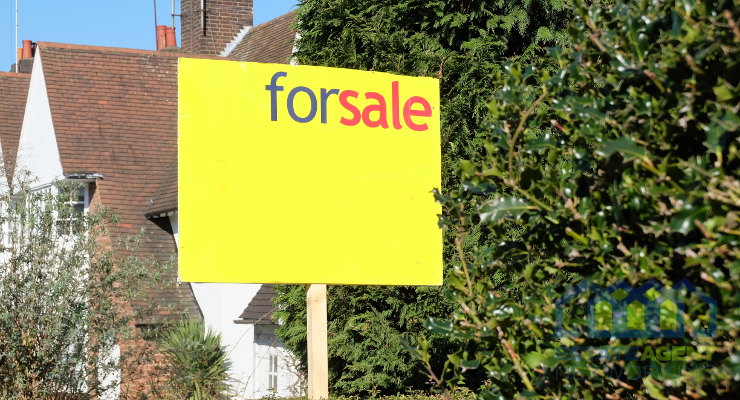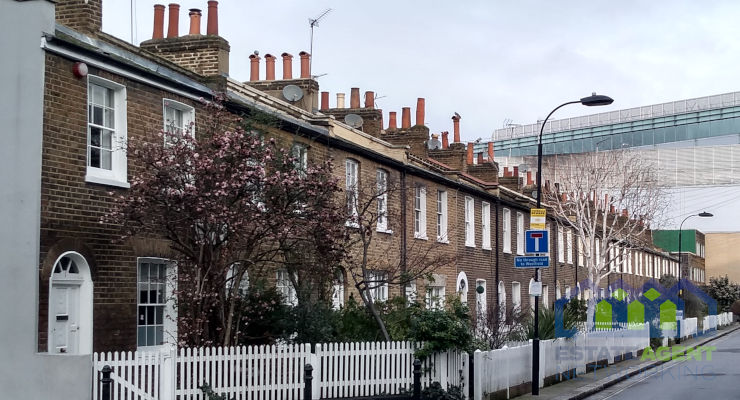Breaking Property News – 11/05/2023
Daily bite-sized proptech and property news in partnership with Proptech-X.
Net Zero for buildings by 2030, does Amazon have a solution?
In September 2022, the Government published its guidance notes on ‘Net Zero Carbon & Sustainability In construction’ Its main takeaway being,
‘Around 40% of UK carbon emissions are linked to the built environment. This includes emissions linked to heating buildings, the energy they consume to support operations and the operation of transport infrastructure.
Construction activity accounts for around 50m tonnes of CO2 emissions, over half of which is linked to construction product and materials production, particularly materials such as steel and cement, which account for around 15% of global carbon emissions. The construction sector also generates around 60% of waste produced in the UK.
Reducing and ultimately eliminating these emissions, through minimising materials requirements, particularly those of carbon-intensive materials, maximising the energy and heat efficiency of built assets and improving levels of reuse and recycling is critical to the delivery of the 2050 target.
Contracting authorities have a responsibility to act now to reduce these emissions, consistent with the trajectory of reducing UK emissions by 68% by 2030, 78% by 2035, and achieving net zero carbon by 2050.
The Construction Playbook states that all Contracting Authorities should have strategies in place to achieve net zero carbon in relation to construction and operational emissions across their estates and other built assets by 2050, as part of a Strategic Asset Management Plan.
In considering how to reduce carbon emissions, Contracting Authorities should take a whole life approach to mitigating carbon, and ensure due consideration is given to issues such as waste and recycling, sustainable sourcing of products and materials, and the objective of developing a circular economy’
Given that at a governmental level serious political emphasis is being focused on the problem there appears to be very little tangible evidence of anything being done and the clock is ticking.
And this may be because that the relationships between competing factors that underpin all of the construction ecosystem, are entwined and complicated. As explained in the following piece I wrote on the topic.
Like many personal relationships in the 2020s, the bond between sustainability and real estate is a complicated one. Because ensuring the human-created environment is ecologically balanced and has ongoing green credentials is often sacrificed due to the many years needed to recoup the amount of energy used in the build. Also, how do we even go about measure if we are giving more than we take?
Well, three decades ago, BREEAM, a theoretical analysis set up by the Building Research Establishment, helped the cause. Its certification rating shows the sustainability level of a building. Today, many governmental departments insist that developers include a BREEAM assessment as part of pre-planning process.
All sorted then, right? Well, no, because over 35% of UK greenhouse gas emissions, are caused by the built environment. So, whilst some rockstar commercial asset designers and builders, like HB Reavis has been awarded BREEAM stardom with its latest creations, around the globe, the reality is that concrete, an environmental bandit, is still relied on too heavily.
The raw components of concrete have to be extracted: limestone, granite and, sand, the act of which is already environmentally unfriendly. Then, just like any love affair, more complications arise as the process progresses, producing huge amounts of greenhouse gases along the way.
Furthermore, when the calcium carbonate is thermally decomposed, it produces large amounts of lime and carbon dioxide. None of this is good. And nor is the fact that the whole process relies upon vast amounts of energy generated by burning fossil fuels.
So, without wanting to sound too despondent, like many personal relationships, maybe the concept of ‘green’ in the built environment is doomed? Unless we all live in mud hut, of course. Although even that would negatively impact the natural environment.
Fortunately, Mother Nature rewards invention, and scientists are specifically working on changing the curing process of cement in order to reduce emissions which, according to Marcello Rossi, were ‘Responsible for about 8% of global carbon dioxide (CO2) emissions in 2015 … if it were ranked with individual countries, the cement industry would be the third-largest greenhouse-gas emitter in the world behind only China and the United States.’
I am comforted by the fact that PropTech advancement and the digital transformation of global real estate can deliver answers. There are some great minds looking at and investing in built environment sustainability, one of which I find a little ironic.
I’m talking about Amazon. Now, my spoilt and pampered cockapoo, Zara, (see image) goes crazy three times a day when a huge Amazon cardboard box arrives at the front door, half-filled with essential goodies to keep mine and Zara’s relationship on track.
The carbon footprint of Amazon’s packaging and distribution is, I’m guessing, monumental. So it’s strange to see CEO Jeff Bezos plough $6.7 million into a company called Plant Prefab, headed by a visionary called Steve Glenn. The company executes homes which are, according to Ross Ufberg ‘the ideal marriage of high design, efficient building, environmental consciousness, and affordability.’
These Californian designer homes, with open vistas and glass and wood components, constructed in a modular format, are high-end, luxury properties. Designed by Yves Behar, a renowned industrial designer, they bring together simple elements stylishly, all with a distinct lack of concrete.
Great, you might think, big industry giving back through green design! Well, again we are back to how tricky relationships can be. Because, while these homes themselves are green, they’re also going to be stacked with Amazon devices like Alexa, So questions around the sustainability of such hardware, let alone the thorny question of privacy and corporate intrusion, still exist.
What is clear is that the environment and sustainability are central to all global governmental decision-making, which means that planners and designers are looking closely at ways of reducing the carbon footprint of the building itself as well as the eventual running costs, such as lighting, water, heating, ventilation and ongoing maintenance of the lived-in properties: all while trying to balance the initial cost of the construction with its ecological impact.
New tech delivers solutions to old problems, many of which seemed impossible to solve only a few years ago, I am comforted by the fact that Proptech advancement and the digital transformation of global real estate, from planning through to construction and disposal, can deliver answers.
New tech delivers solutions to old problems, many of which seemed impossible to solve only a few years ago. And with the rise of the so-called Millennial class and Gen-Z, thrusting for a more sustainable environment to live in, companies are seeing more and more reason, even if it’s self-serving, to contribute towards real estate’s efforts to ‘go green’.
Maybe the post-WWII concrete pre-fabs and tower blocks which dominate much of Europe will be re-imagined by new minds, given how much entrepreneurs love a challenge, and given their vast investment potential?
Tricky personal relationships may come and go, but commerce, and specifically the financial imperatives of capital and profit, will always win out. As the IFC Green Buildings blueprint report, forwarded by Alzbeta Klein, Director of Climate Business, states:
‘Green buildings are a higher-value, lower-risk asset than standard structures. Besides lowering energy consumption, and therefore operational costs, greener buildings typically achieve higher sale premiums and attract and retain more tenants, ensuring a more continuous revenue stream. In addition, green buildings can help investors and owners manage the risks associated with a transition to a lower carbon economy.’
So, if nothing else, we can certainly hope that governments around the world implement such impactful new sustainability laws and regulations that real estate assets only maintain value if they don’t damage the environment. As they say, follow the money: hopefully, our industry can follow it all the way to a greener tomorrow.
In recent weeks property pundits have tried to be upbeat about a recovering housing market, today with another body blow, yet another hike in the cost of borrowing, twenty-five points, means a fragile Spring housing market looks in danger of becoming a complete wash out.
In simple terms, the housing finance tap has been turned off, cheap money is a distant memory and an already hard pressed nation, will be battening down the hatches and hunkering down, rather than over extending themselves with bigger spending commitments.
In March 2020, 38-months ago the Bank of England base rate was just 0.1%, which meant that a two year fixed rate mortgage was 1.99%. So a £200,000 mortgage would cost only £840 a month.
Today with the Bank of England base rate rising by 0.25% to 4.5%, the same amount of mortgage would cost £1,1409, a rise of over a third.
Similarly, Inflation back in 2020 was 1.23%, now it is over 10%. Factor in food inflation, the hike in utilities etc, and with further interest rates likely before the year end, many homebuyers will now be unable to afford to move.
There has been wild debate between the two major political parties over housing, the lack of the 300,000 new properties being built a year, a softening of the planning policy, and rash promises of new homes for first time buyers first and an end to the housing shortage.
Maybe the politicians need to grasp that fundamental economics underpins all, expensive borrowing narrows not widens the amount of buyers who can buy. Pointless in building properties if no-one can buy them.
Separate to this, there has been much talk of enfranchising renters, and getting them into homes with 100% mortgages.
But the devil is in the detail, a tenant paying £1,000 a month in rent could get only a £163,000 mortgage, that is £120,000 short of the average house price, so not a lot of use.
With interest rates likely to rise by another 0.25% to 0.5% later in the year, present wisdom is that completions in 2023 will be 1.15M, down from 1.3M last year, and the prices achieved will be getting lower as the burden of debt bits ever deeper into the home buying and selling community in the UK.
Andrew Stanton Executive Editor – moving property and proptech forward. PropTech-X









